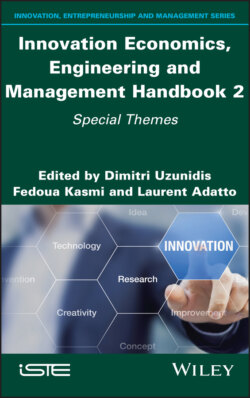Читать книгу Innovation Economics, Engineering and Management Handbook 2 - Группа авторов - Страница 19
2
Engineering – Innovation Engineering: A Holistic and Operational Approach to the Innovation Process 2.1. Introduction
ОглавлениеThe strategic and competitive environment in which organizations must operate has been significantly affected in recent years by globalization, technological and digital revolutions as well as the changing needs and expectations of users and consumers/customers. Today, more than ever, it is urgent to make organizations capable of dealing with change in an innovative and truly agile way.
How can more or new value be created? Whether we are talking about products, processes or services, innovation has the mission of bringing something new and original to existing or new markets. Any innovation process is based on the concept of a “real good idea”, one that will add value by going off the beaten track and that will be accepted by the target user/consumer. It happens neither by chance nor due to the sole fact that scientists have such a mission in the R&D department. It can be done by anyone.
It is true that some innovations that have received a lot of attention from the media have arrived by accident, or by chance (e.g. the post-it), although these remain marginal. Today, most innovations are the result of a continuous search for opportunities within the firm’s environment and are the result of a systematic approach and a set of planned activities.
Managing the innovation process therefore requires skills that need to be developed through a specific methodological toolset which will allow us to be aware of global circumstances in order to act locally and which, above all, will make it possible to measure the impacts of decisions made about the ecosystem in which the innovation will/must find its place. In this sense, the objectives of the implemented approach in innovation engineering are: to encourage the emergence of concepts from end-users (bottom-up) by relying on agile-inspired approaches and by using rapid prototyping from the upstream phases (front end) of the innovation process; to develop co-creation and co-design by promoting collaborative and open innovation within a group of extended actors (customers, users, suppliers, partners, etc.); and to have the end-users evaluate the prototypes produced. We therefore assume that it is a process, i.e. a set of interdependent activities that use inputs to produce a result that adds value to the field under study. It is therefore possible to measure the state of each activity and thus to propose ways of improvement. In this sense, innovation engineering cannot be a linear process, but a succession of steps (“gates” in the sense of Cooper (1990)), which can be arranged according to the context of the innovation and reviewed along the way.
In this contribution, we first propose tracing the origins of the structuring of this field of research in France, showing the point of view of engineering that deals with the theme of innovation and the major currents of thought that have enabled innovation engineering to be structured as an approach to support the improvement of innovation processes. We have chosen to focus on France because, as actors in this ecosystem, we think we know it well enough to provide a complete, if not exhaustive, view of this field of research. We will nevertheless draw parallels with international authors who, because of their popularity, have had a perceptible impact on the evolution of research, as well as with research communities that have been created and that were at the origin of the first international conferences on innovation, science and technology management. Then, we will present the key concepts and major biases of the transformation of an idea into a useful innovation for society. We also provide some advice to make the engineering for innovation approach accessible to any researcher, trainer or industrialist who wishes to get out of their routine and acquire new practices to carry out their innovation projects. Beyond a method, this is really a new way of acting (mindset) that allows an organization and its individuals to become more efficient. It is not a matter of reproducing a formula learned by heart, but rather of understanding the main principles in order to develop the process best suited to the context and singularities of each situation.
